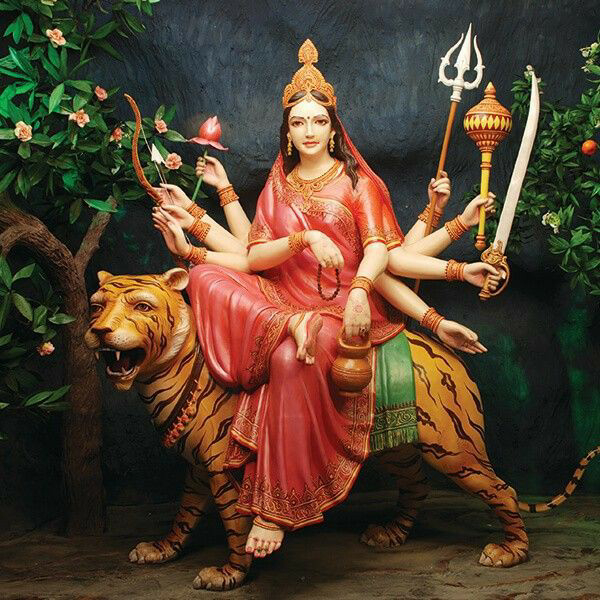Day 3 of Navaratri: Celebrating the Power and Grace of Goddess Chandraghanta
Navaratri, a festival that reverberates with the essence of Indian culture, spans nine nights of spiritual immersion, vibrant dances, and soulful prayers. Each day is dedicated to a different form of Goddess Durga, epitomizing a unique strength and virtue. On the third day, the devotion is centered around Goddess Chandraghanta, a symbol of peace, serenity, and bravery.
Goddess Chandraghanta: An Embodiment of Grace and Valor
Dressed in a bright golden hue, with a crescent moon gracing her forehead, Goddess Chandraghanta rides a tigress and is often depicted with ten arms wielding various weapons. Her name, Chandraghanta, is derived from two words – ‘Chandra’ meaning moon, and ‘Ghanta’ meaning bell. The crescent moon on her forehead resembles a bell and hence she gets the name.
But what’s truly captivating about Chandraghanta is the duality of her nature. The calm demeanor that the moon suggests and the fierce warrior spirit that her weaponry displays, beautifully encapsulates the equilibrium of peace and power. This balance is something every individual strives for in their personal and spiritual lives.
Day 3 Rituals and Significance
On the third day of Navaratri, devotees rise at dawn, cleanse themselves, and set up a special altar adorned with flowers, incense, and lamps. They recite hymns, mantras, and offer sweet delicacies to invoke the blessings of Goddess Chandraghanta.
In many communities, this day signifies the act of breaking one's limitations and venturing into unknown spiritual terrains. This is depicted by the sound of abell, which is believed to be the sound of the universe resonating with the divine. The sound signifies the awakening of one's spiritual self, breaking the shackles of ignorance, and embarking on a journey of self-discovery.
Symbolism of Goddess Chandraghanta
The serene beauty of the moon and the clang of a bell encompass the duality of life – peace and turmoil. Just as the moon waxes and wanes, life too has its ebbs and flows. And like the resonating bell that dispels negativity with its sound, the grace of Goddess Chandraghanta empowers devotees to face challenges head-on.
Her mount, the fierce tigress, symbolizes agility, strength, and determination. It teaches devotees that while inner peace is essential, there are times when one must assertively stand against adversities.
Music, Dance, and Celebrations
Day 3 of Navaratri is a spectacle of rhythmic beats and vibrant dances. In the western parts of India, particularly Gujarat, people gather in large numbers to perform the traditional dance of Garba. Colorful attires swirl in perfect harmony as dancers move in concentric circles, symbolizing the cyclical nature of life. The beats of the dhol, combined with the melodious tunes, invoke a divine trance, making everyone feel the omnipresent energy of the Goddess.
Reflections for the Modern Soul
In today's fast-paced world, the essence of Goddess Chandraghanta's teachings is more relevant than ever. The need for inner peace, balanced with the strength to face life's challenges, is paramount. The third day of Navaratri is a reminder that we must harness both serenity and valor to navigate our journeys successfully.
Furthermore, the Goddess teaches us about harmony. The balance of peace and bravery, the serene moon, and the potent bell, all point towards the harmonious coexistence of contrasting energies. In our lives, this could mean balancing work with rest, action with contemplation, and speech with silence.
In Conclusion
The third day of Navaratri is not just a day of rituals and celebrations; it's a day of introspection, understanding, and imbibing the dual energies of Goddess Chandraghanta. As we move ahead with the festive spirit, let's take a moment to internalize these lessons and strive for a life that resonates with peace, courage, and harmony.





Comments